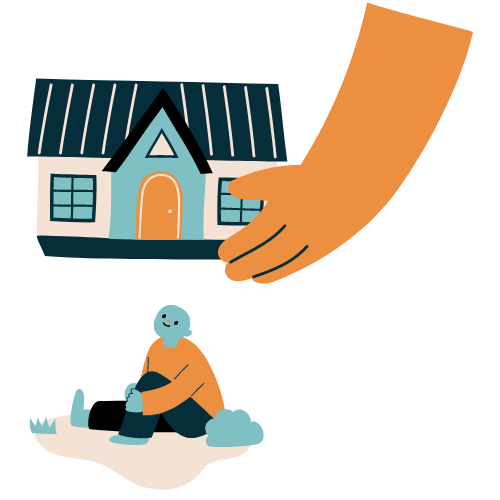People experiencing homelessness
What the evidence shows
Poor health (including mental ill health) can be both a cause and a consequence of homelessness, although it is not always clearly specified or identified. For example, ill health can be a contributory factor in relationship breakdown or job loss, which can then result in homelessness. Homelessness has a significant impact on both physical and mental health, with life expectancy for homeless people 30 years lower than the general population at 47 years old.
In Kirklees in 2022/2023, 1,809 people were recorded as having an initial assessment of homelessness through circumstances and needs. It is likely that the actual number of homeless people in Kirklees is larger than this, given the unknown levels of people who have transient or insecure accommodation.
Evidence shows that people who are homeless are more likely to be exposed to death - particularly violent, early or traumatic deaths. This can lead to a strong acceptance or aversion to death as well as differing perceptions on what a 'good' death or a 'bad' death might be. For example, a good death might be considered quick, peaceful and with access to substances of addition. On the other hand, a 'bad' death could be considered violent, uncertain or lonely.
People who are homeless are more likely to experience mistrust in the organisations or people who would traditionally be involved in end-of-life care. This is often based upon many years of feeling isolated from mainstream society, with traditional services unable to meet the needs of homeless people. For these reasons, homeless people may often choose not to receive end-of-life planning or care support.
What Kirklees organisations told us
Colleagues from Kirklees highlighted a range of issues for end-of-life care and planning for homeless people. These included:
Hospital discharge
Some homeless people on end-of-life care in hospital are unable to be discharged as suitable accommodation is not available. This means that they are either discharged into unsuitable or temporary accommodation or remain in hospital when they are medically fit for discharge.
There's a really big barrier with discharging people who are homeless, and there's nothing more that can be done in hospital...discharging them into accommodation that can be appropriate for their care needs. So if it's things like breathing equipment, if it's things like oxygen tanks, that sort of thing. We just don't have the number of appropriate properties to be able to place people from out of hospital into the appropriate accommodation for their needs.
Unsuitable accommodation
Related to the above point is the fact that homeless people are often living in accommodation which is unsuitable for end-of-life care. This could be because of the size of the accommodation but also due to issues around damp and the availability of gas, electricity, food and warm water.
We had a patient who had no gas and electric in their property, so they couldn't sterilise water to flush his gastrostomy tube with. They had no gas to heat the property.They didn't have much room, so it was difficult getting the hospital bed in. And because he was on peg feeds there were boxes and boxes of feeds that were just stacked up everywhere.
We've actually had people who have passed away in our accommodation units because there hasn't been enough time or enough resources to get them moved into something better. And that's not really ideal, particularly when you're talking about a small studio. And I think within that, it's accommodating relatives as well... Finding room for them, you know, to be with their relatives towards the end of their life is also very difficult as well. I don't know what the answer is because I think this is all about supply and demand and timing.
Engagement with services
Often, homeless people may have experienced trauma which means that they find it difficult to place trust in organisations or in people in positions of power. This means that they may not wish to engage with end-of-life support services or prefer to manage their death in a way which is not associated with the usual 'norms'.
Often end-of-life planning is not actually a priority... or people struggle to make it a priority. There are other things in their lives which are still more important. If you're homeless or you've got multiple complex needs or you're struggling with significant poverty, then dying is not top of your list.
There will still be historic trust issues for some people that we're working with. For others it might just be that their version of dying with dignity is to be left alone.
Sudden or traumatic death
Colleagues told us that many of the homeless people they work with have experience of sudden or traumatic death. This can often be as a result of suicide, violence or substance misuse. This has significant implications for individuals, family and friends - as well as for the staff providing support.
Recommendations
There is an ongoing hospital discharge pathway within Housing Solutions, which provides housing advice for people leaving hospital. Feedback from colleagues suggests that further consideration and exploration of how care pathways, including hospital discharge, could be developed to support homeless people who have received an end-of-life diagnosis.
